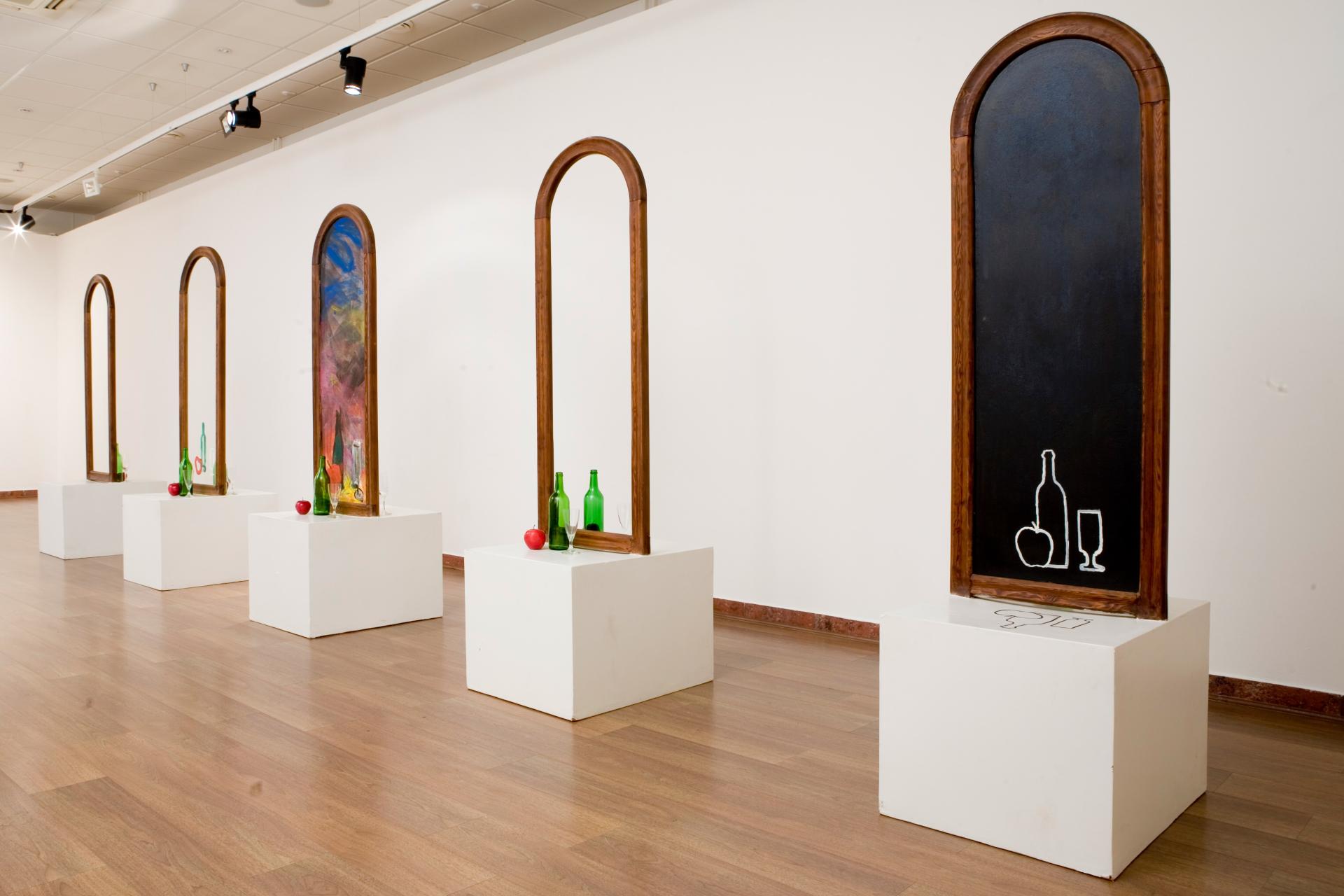
Stella Art Foundation presents on its premises in Skaryatinsky pereulok two installations by Ivan Chuikov, a classic of Russian conceptualist art, from its own collection. The scientific-poetical combinatorics of their titles points at the dual purpose of his works: to act as an object of art and its explanation, a literary text and a comment on it at once.
The “Theory of Reflection 1” (1978-92) easily turns material objects into forms of thinking, the physical reflection into the reflexive thought. An absolutely classical still-life (a bottle — a wineglass — an apple) by methodically repeating themselves on both sides of the frameworks, goes through an almost metaphysical series of its reflections and transformations: from non-existence to existence, from decidedly pictorial/photographic to ideal and eidetic. The question of which of the reflections and representations is more true and beautiful (which is closely associated with the eternal themes of beauty and justice, of the mimesis and the realism in art and the very origins of the latter) is pointedly left out: the different versions of answers are equaled by putting them into one and the same row of the elements of installation. By exploring the relationships of the universes found on both sides of glass-canvas-mirror-framework, Chuikov draws in his own way the borderlines between the work of art and the world, the artist and the spectator, implying that this theme can’t be exhausted once and for all.
The “Analytical Tree” (1994) is assembled from his works acting as elements. They are diligently numbered and joined together by lines into a universally comprehensible scheme. In the middle of the installation there is a picturesque reproduction of a commonplace Soviet postcard with a landscape in a frame composed of cheerful flowers. In the surrounding figures this trite image falls apart with great effect into impressionistic fragments of branches, a pop-art-style collage made of an enormous flower, a postal stamp and a blurring gravel path, an expressionistic abstraction, flickering of Lichtenstein dots, Rothko’s remakes and Twombly’s flourishes... Fragments of the central (complete) image are scaled. His penetrating gaze successively zooms in units of visual writing, invades the outline of the everyday life, transforming it into an extreme formal expression. The movement from the centre of the installation to its edges takes to pieces with analytical ruthlessness the postcard-like myth of the Soviet prosperity by eventually leaving us with nothing but meaningless fragments. On the other hand, the reverse movement towards the centre generates a small miracle: chaotic contradictions, logically and yet every time quite unexpectedly, give birth to a small piece of the Soviet Paradise. The postcard-like dream and the stark visibility of its embodiments and disembodiments exist at the same time. The artist brings them to the spectators in an intentionally consistent way as an object of their free choice.
While appealing the the public and calling for its attention and understanding, Chuikov’s installations nevertheless remain hermetic — this is where the art is engaged in a dialogue with and within itself. The particular correlates with the general, works of art with laws, according to which they are created and exist, the laws they ignore or challenge. What first appeared as a riddle gradually evolves into a fascinating game whose rules become ever more clear, only to close on itself again. The door from the physical world into the realm of the ideal is opened a little, but one still can’t enter it.
Anastasia Dokuchaeva